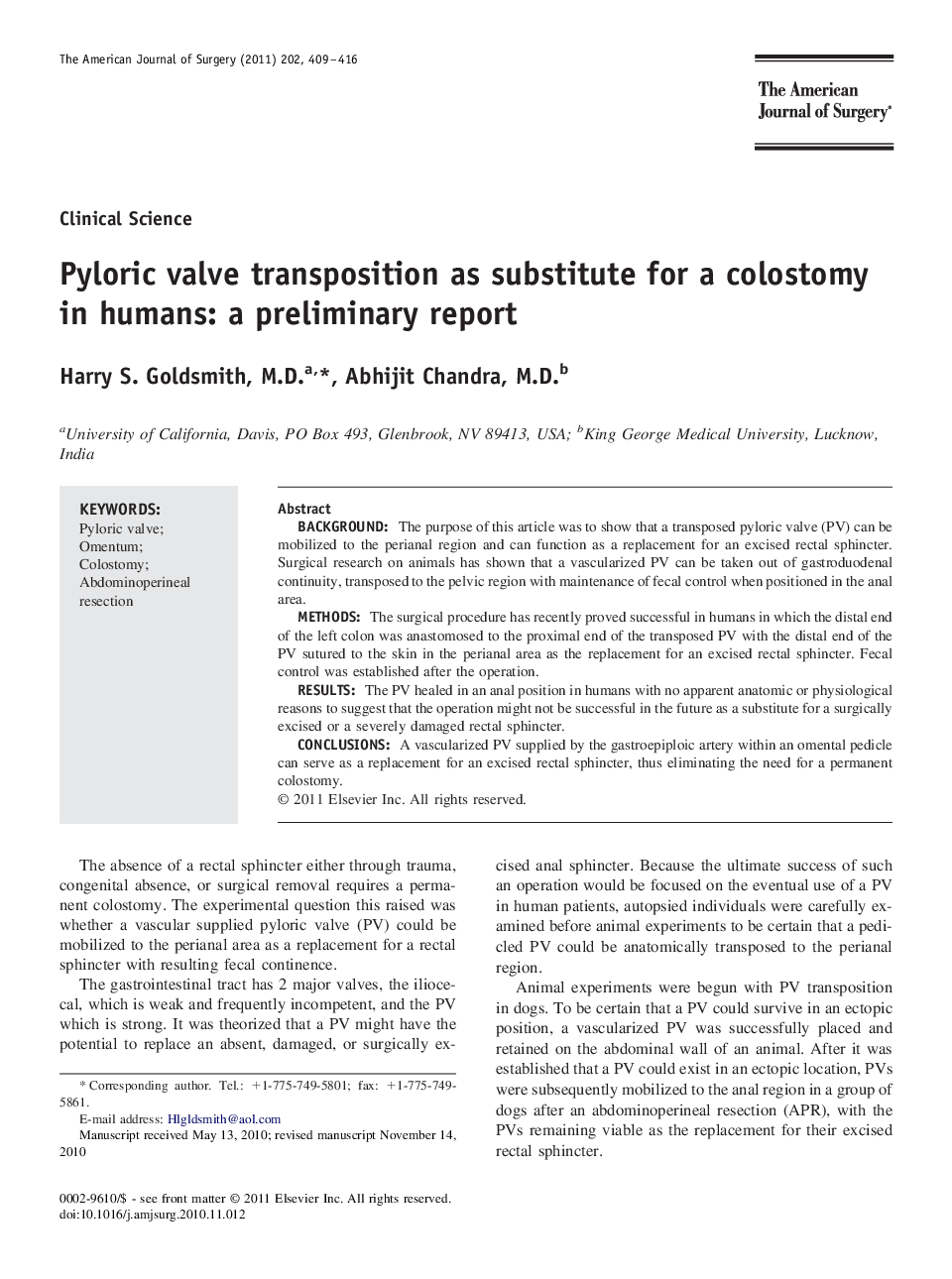| Article ID | Journal | Published Year | Pages | File Type |
|---|---|---|---|---|
| 4280050 | The American Journal of Surgery | 2011 | 8 Pages |
BackgroundThe purpose of this article was to show that a transposed pyloric valve (PV) can be mobilized to the perianal region and can function as a replacement for an excised rectal sphincter. Surgical research on animals has shown that a vascularized PV can be taken out of gastroduodenal continuity, transposed to the pelvic region with maintenance of fecal control when positioned in the anal area.MethodsThe surgical procedure has recently proved successful in humans in which the distal end of the left colon was anastomosed to the proximal end of the transposed PV with the distal end of the PV sutured to the skin in the perianal area as the replacement for an excised rectal sphincter. Fecal control was established after the operation.ResultsThe PV healed in an anal position in humans with no apparent anatomic or physiological reasons to suggest that the operation might not be successful in the future as a substitute for a surgically excised or a severely damaged rectal sphincter.ConclusionsA vascularized PV supplied by the gastroepiploic artery within an omental pedicle can serve as a replacement for an excised rectal sphincter, thus eliminating the need for a permanent colostomy.
